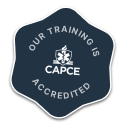
What is an Emergency Medical Responder?
An emergency medical responder is a healthcare provider at the most basic level of prehospital medicine. EMTs have the basic skills required to stabilize and transport patients in settings ranging from non-emergent medical transport to the scenes of medical emergencies.1 As EMRs have the least education of any level of prehospital care, they frequently provide basic lifesaving care while waiting for EMT or Paramedic responses and assist EMTs and paramedics in stabilizing patient care prior to driving the ambulance to the hospital. EMRs generally function as part of the Emergency Medical Services (EMS) system under medical direction, though they are also employed in many places where injuries or illness could happen such as a summer camp or a cruise ship4.
Education Requirements to Become an EMR
EMR education is usually around 50-60 hours of instruction in the classroom prior to testing. Some EMR schools require their students to have a high school diploma or GED. Additionally, many EMT programs ask students to be over 18 years old. If a student is looking for an EMR program, it is important to go to a state-approved EMR program. If the accreditation for a school is not accepted by the state, that student will not be able to get their license to practice.2
Licensing and Certifications
The cognitive exam for EMR is a computer adaptive exam conducted by the NREMT. The psychomotor exam is generally conducted by the state EMS office or the accredited EMR program with oversight from the NREMT. This test is in-person (some remote options have been implemented during the coronavirus pandemic) and involves scenarios and testing skills involved in basic prehospital care. If the cognitive exam is failed, the student must retake the course.2 Once a student passes both their cognitive and psychomotor examinations they must apply for a state license to practice in the state they would like to work. This involves the state conducting a background check on the student and verifying they have their EMT certification from the NREMT.
EMR Salary
The average salary for EMRs in the United States is around $33,000 per year.3 This can fluctuate a lot depending on experience and role. An entry-level EMR may make a little less than that, but an experienced EMR who has gained a leadership or training role at their company may make a lot more. Additionally, being an EMR is frequently a prerequisite for higher-paying jobs within EMS such as an EMT, firefighter, or paramedic.
Character/Physical Traits of EMRs
Being an EMR is an important job, and it’s important that individuals thinking about the career have an understanding of what the job entails. It can be stressful, fast-paced, and requires individuals who are comfortable working under pressure. In many emergency situations, time is of utmost importance, and working efficiently while maintaining a stable headspace is a must. EMRs also have to have compassion. The goal of EMRs is to help their patients and individuals with compassion tend to be better providers and find the work more rewarding. EMTs need to have sufficient physical strength as well. Different roles and positions have different requirements but EMRs are frequently found moving and lifting patients and bending or crouching to provide appropriate patient care. Lastly, EMRs need to have problem-solving skills. The emergency environment is ever-changing and there are new unique patients every day that count on EMTs to have critical thinking skills in order to figure out what is wrong and provide appropriate care.
References
- Emergency medical Responder. National Registry of Emergency Medical Technicians. (n.d.). Retrieved November 16, 2021, from https://www.nremt.org/EMR/Certification.
- EMR full education program pathway. National Registry of Emergency Medical Technicians. (n.d.). Retrieved November 16, 2021, from https://www.nremt.org/Document/EMR-Full-Education-Program-Pathway.
- Emergency medical Responder annual salary in Oregon ... (n.d.). Retrieved November 16, 2021, from https://www.ziprecruiter.com/Salaries/Emergency-Medical-Responder-Salary--in-Oregon.
- U.S. Bureau of Labor Statistics. (2021, September 8). EMTs and paramedics : Occupational outlook handbook. U.S. Bureau of Labor Statistics. Retrieved November 16, 2021, from https://www.bls.gov/ooh/healthcare/emts-and-paramedics.htm.
- Dozens of courses and topics
- State-specific requirements
- We report to CAPCE in real time


